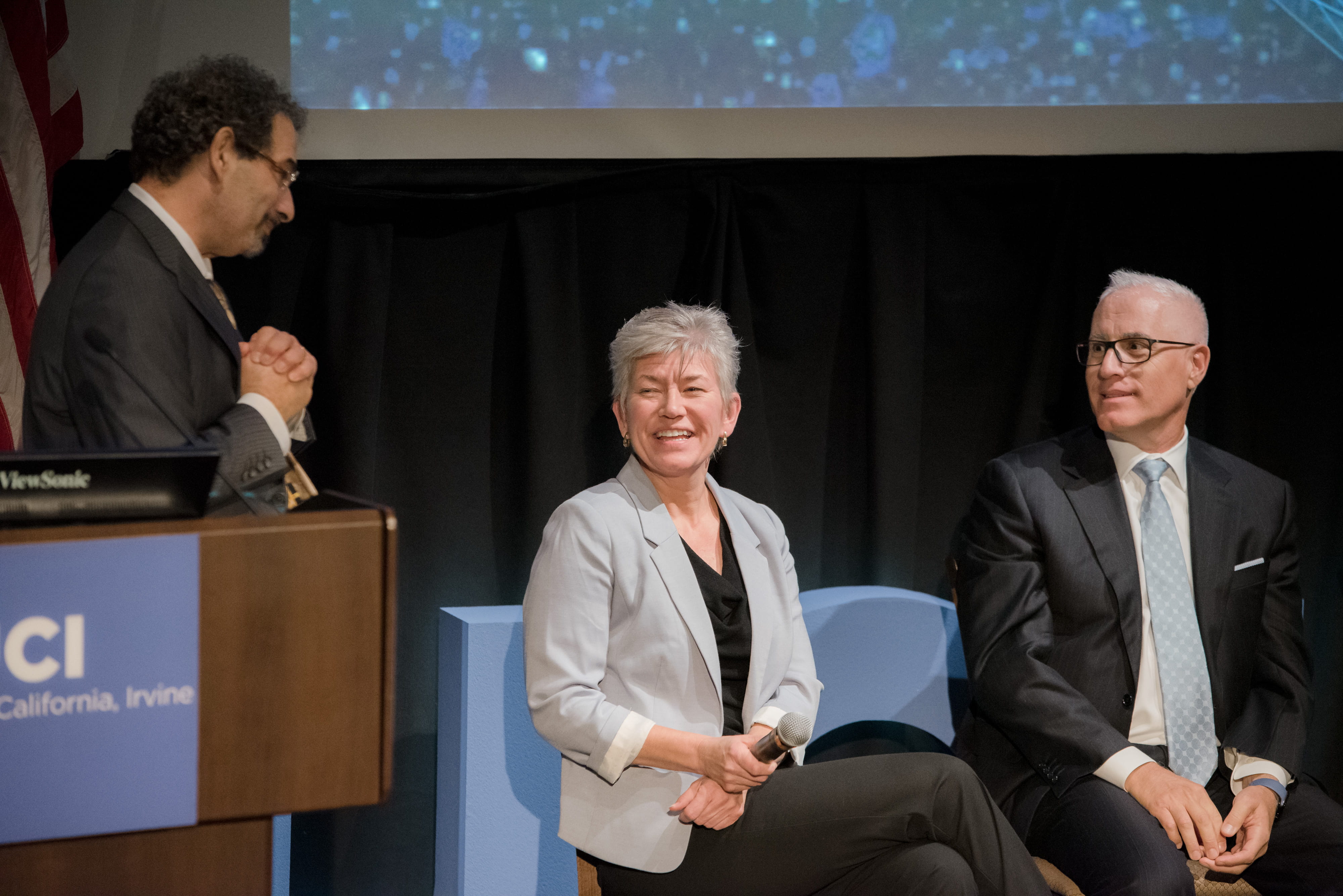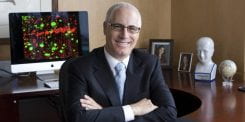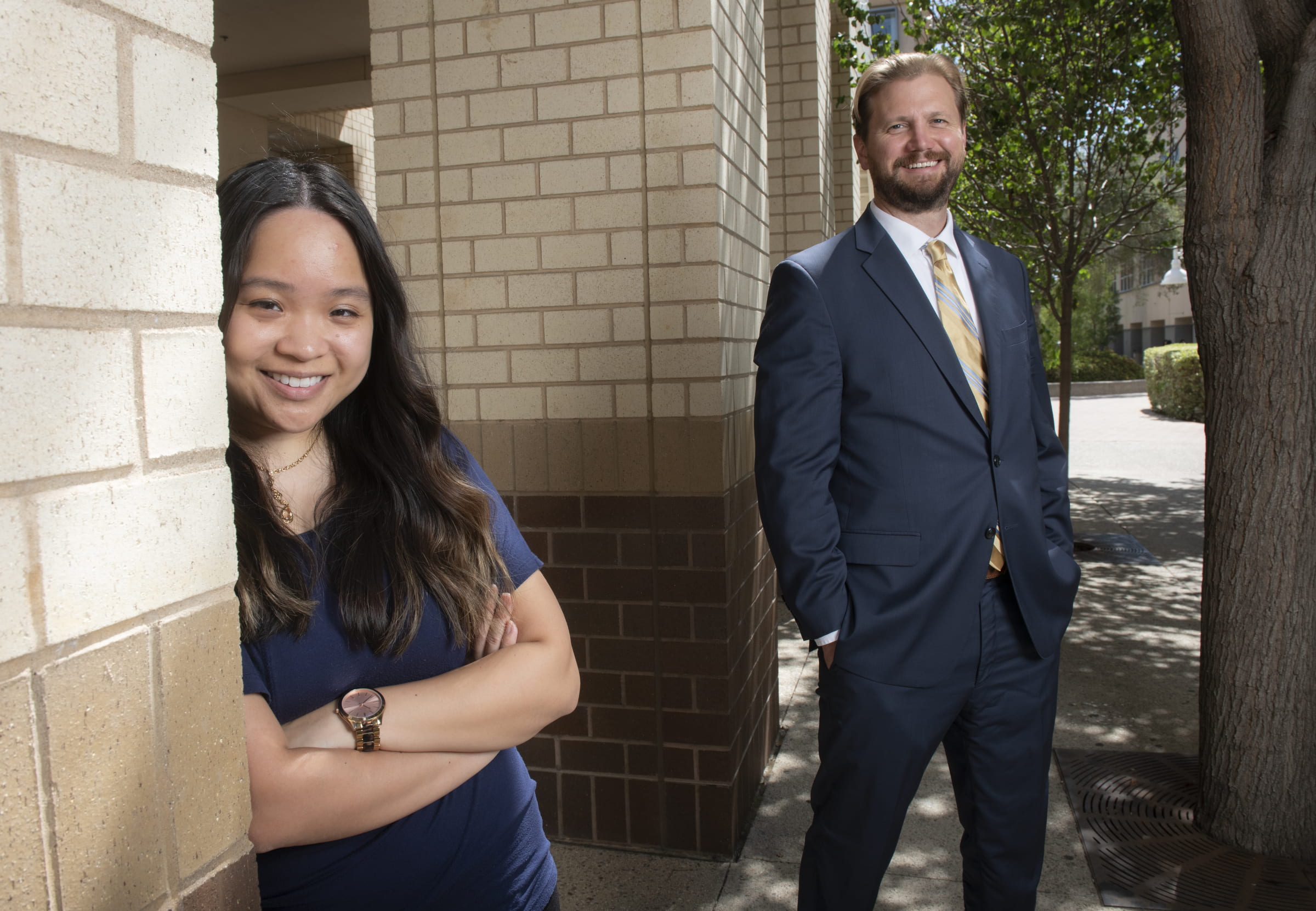Exploring humanity's final frontier
UCI Brain Launch Event kicks off an ambitious campus effort to expand the horizons of neuroscience research

The brightest minds in neuroscience came together Nov. 21 for the UCI Brain Launch Event, an interdisciplinary academic initiative set to define and expand the horizons of brain research at UCI and beyond.
More than 700 attended the day-long symposium at the Beckman Center of the National Academies of Sciences & Engineering, where Michael Yassa, director of UCI Brain, introduced a host of new technologies that redefine brain research, including a collaboration with the Claire Trevor School of the Arts. The evening brought a fireside chat, in which leading neuroscientists from varying disciplines answered questions from the public discussing how far the frontiers of interdisciplinary brain research extend, and what the impact of that reach will be.
He expressed his excitement for the integration of what he called the four research themes of UCI Brain: the healthy brain, the computational brain, the social brain and the artistic brain.
“The last five years of the federal BRAIN Initiative have been all about new technologies. UCI has played a critical role in those developments. In the next five years, there will be even more of an impact as we apply these new technologies to understanding the brain and its disorders,” said Yassa, who also directs the 36-year old Center for the Neurobiology of Learning and Memory. “UCI has both a renowned legacy and a brilliant future in brain science. We have a special formula where all facets of the campus can get together and collaborate on interdisciplinary research to answer big questions.”
UCI Brain is the “moonshot” of the campus effort to unlock the mysteries of the brain, from hopes to eradicate brain disease to the development of the next generation of brain-based artificial intelligence to a fuller understanding of the nature of the human experience.
UCI Brain was established in 2018 through the Provost-sponsored academic initiative program in the Office of Academic Planning. The initiative plans to advance brain research through collaborative interdisciplinary work throughout multiple centers across campus, such as: developing new brain imaging techniques; understanding the links between sleep and brain health; using stem cells to heal spinal cord injury; and employing neurophysiological recordings to improve the artist’s craft.
UCI Brain exists as a campus-wide effort to consolidate and share research across disciplines and develop graduate programs that teach students to work across disciplines. Several graduate programs have recently emerged at UCI that embody the principles of interdisciplinary collaboration and team science. UCI Brain has also invested in Dimensions, a new online platform for digitally sharing and connecting with cross-campus research partners. New seed funding opportunities were also announced as part of the initiative.
“UCI’s highly collaborative and interactive nature is why so many faculty members join us. We are so fortunate to have all these centers that communicate with one another,” said Frank LaFerla, dean of the School of Biological Sciences and a leading Alzheimer’s disease researcher affiliated with the Institute for Memory Impairments and Neurological Disorders.
At the UCI Brain Launch Whiteboard Brainstorm Session, student researchers presented findings that ranged from the ability to use behavioral therapies to control pain and pleasure responses produced by its endocannabinoids – eventually phasing out pharmaceutical treatment for diseases like sickle cell and possibly even opiate addiction – to the neurological and social trauma inflicted by cellphone use. Visual art, acting and drama students measured their brain’s emotional immersion, and for the first time ever, the same students, alongside drama instructor David Ihrig, used this research during an improvisational demonstration to measure audience emotional immersion in the performance.
Brain research is a forever expanding field, and neuroscientists have yet to grasp the complexity of the brain, or the implications of its computing strength. Yet, the panel discussions and fireside chat played with the boundaries of that understanding and its implications.
“There is no one who would be able to say what an act of creation looks like. Our brains are who we are, and it’s worth the effort to understand,” said keynote speaker Ralph Greenspan, director of the San Diego Brain Consortium and the UCSD Center for Brain Activity Mapping. Greenspan was one of the lead authors on the proposal that led to the White House BRAIN Initiative in 2013.
Aileen Anderson, director of the Sue & Bill Gross Stem Cell Research Center, added: “We can only ask the questions that we have the tools and resources to ask, and those tools limit our understanding, but that doesn’t prevent us from doing great things with what we have.”
“Understanding the brain has the capacity to change society for the better,” Yassa said.



